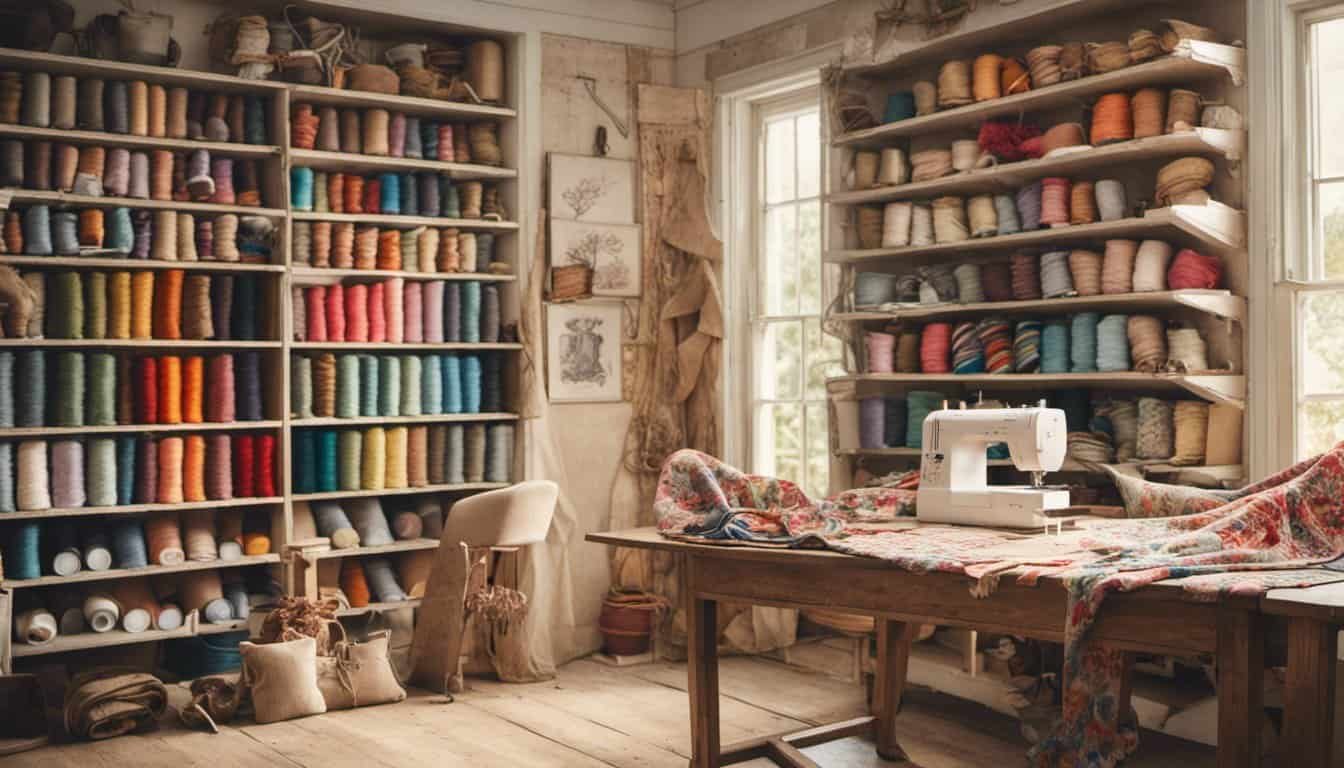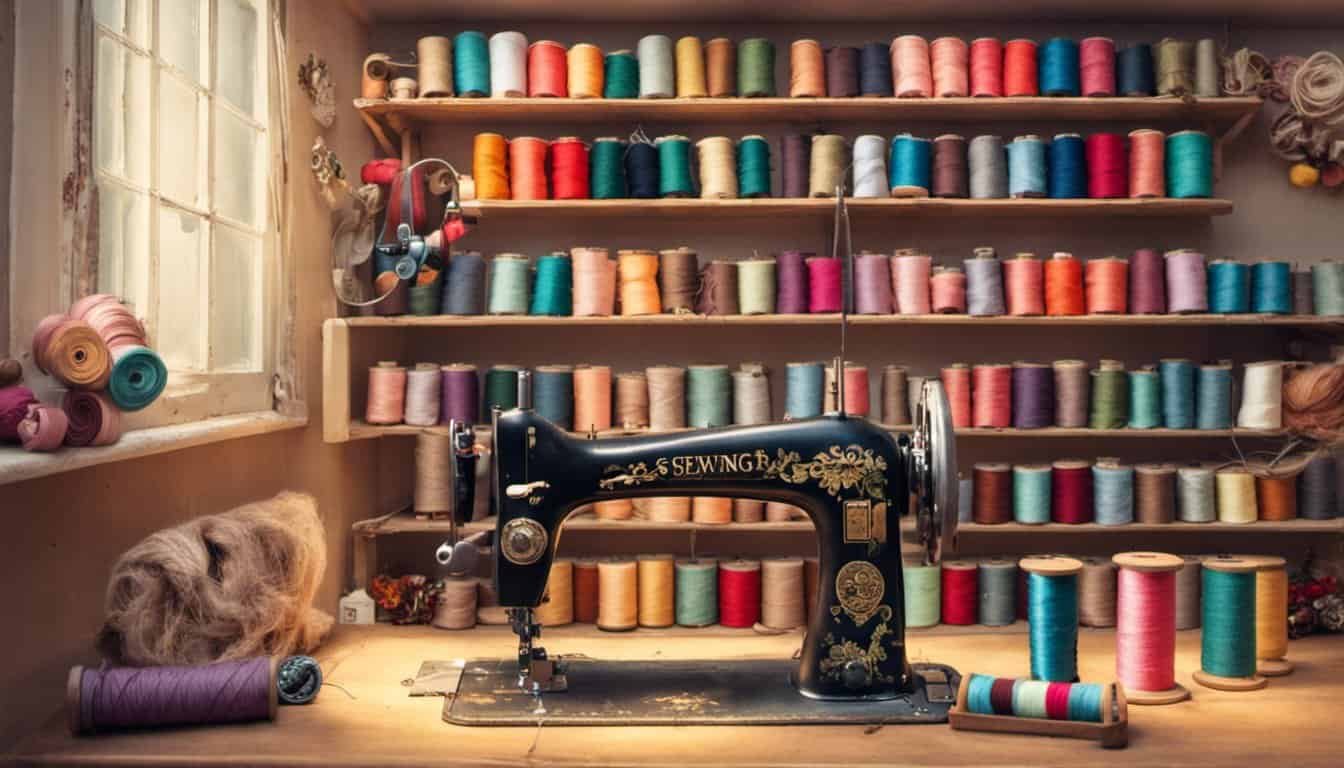Getting your sewing supplies in order doesn’t have to break the bank. I’ve been there, struggling to find that perfect spool of thread or a needle amidst the chaos. Organizing your workspace can transform your sewing experience, making it more enjoyable and efficient.
With a few simple strategies, you can create a tidy and functional sewing area without spending a fortune. From clever storage solutions to budget-friendly organizing tips, I’ll share how you can keep your supplies sorted and accessible so you can focus more on your creative projects.
Assessing Your Sewing Supplies
I start by taking stock of all my sewing supplies. Listing items helps identify what I own and what I frequently use. I categorize supplies into groups such as fabrics, threads, tools, and notions. This organization reveals duplicates or rarely used items. For example, I might have three different measuring tapes but only use one regularly. Next, I evaluate each category to determine what to keep, donate, or discard. Keeping only essential and frequently used items reduces clutter and saves space. I also measure my storage areas to ensure they accommodate my current supplies. If I discover I’m short on storage, I prioritize purchasing affordable organizers that fit my budget. By thoroughly assessing my sewing supplies, I create a clear foundation for an organized and efficient workspace.
Budget-Friendly Storage Solutions
Organizing sewing supplies doesn’t have to break the bank. Here are affordable strategies to keep your workspace tidy and efficient.
Utilizing Household Items
Repurpose items you already own to store your sewing essentials:
- Mason Jars: Ideal for holding buttons, threads, and needles. Arrange them on a shelf for easy access.
- Shoeboxes: Use different colored boxes for categorizing fabrics, patterns, and notions. Label each box clearly.
- Hanging Shoe Organizers: Perfect for storing scissors, tape, and other tools. Hang them on the back of a door to save space.
- Drawer Organizers: Separate small items like pins, beads, and hooks. Stackable units maximize vertical space.
- Pipe Cleaners: Create dividers for organizing spools of thread within containers. They keep colors separated and easy to find.
DIY Storage Ideas
Craft your own storage solutions to customize your space:
- Pegboard Displays: Install a pegboard on your wall. Use hooks and shelves to hang tools, scissors, and rulers. This method keeps items visible and within reach.
- PVC Pipe Organizers: Cut PVC pipes into sections and glue them together. Use the compartments to store pens, needles, and measuring tapes.
- Repurposed Wooden Crates: Stack wooden crates to form a shelving unit. Paint them for a personalized touch and use each compartment for different supply categories.
- Fabric-Covered Bins: Sew covers for plastic bins using scrap fabric. These bins can store fabrics, trims, and other soft items while adding a decorative element to your workspace.
- Magnetic Strips: Attach magnetic strips to a wall or inside a cabinet door. Use magnets to hold pins, needles, and small metal tools, keeping them organized and easy to find.
By leveraging household items and DIY projects, you can create an organized sewing space without spending a lot. These budget-friendly solutions ensure your supplies are accessible and your workspace remains clutter-free.
Decluttering and Categorizing
Organizing your sewing supplies begins with decluttering and categorizing items effectively. This process ensures that everything has its place, making your workspace more efficient and enjoyable.
Sorting by Project or Material
I sort my sewing supplies either by the project they belong to or by the type of material. For project-based organization, I assign specific containers to each current project, keeping all related items together. Alternatively, categorizing by material involves grouping fabrics, threads, and notions separately. This method allows me to quickly locate the materials I need based on the type, streamlining my workflow.
Examples:
- Project-Based: Use labeled boxes for quilting, garment making, or embroidery projects.
- Material-Based: Separate fabrics by color, threads by type, and notions like buttons and zippers in dedicated bins.
Implementing Effective Labeling
Effective labeling is crucial for maintaining an organized sewing space. I use clear, durable labels on all storage containers to identify their contents at a glance. Labels include categories such as “Buttons,” “Needles,” or “Elastic,” and sometimes color-code them for added visual distinction. Additionally, I label shelves and drawers to designate specific areas for different types of supplies, ensuring that everything stays in its designated spot.
Examples:
- Containers: Label mason jars as “Thread,” “Pins,” or “Beads.”
- Shelving: Mark shelves with labels like “Tools,” “Fabrics,” or “Patterns.”
By decluttering and categorizing your sewing supplies systematically, you create a more organized and efficient workspace without breaking the bank.
Maintaining an Organized Sewing Space
Keeping your sewing space organized requires consistent effort and practical strategies. I follow these key practices to maintain an efficient workspace:
Establish a Daily Cleanup Routine
Each day, I:
- Put tools back in their designated places after use.
- Sort any new materials, ensuring fabrics and threads are stored properly.
- Wipe down surfaces to prevent dust and debris from accumulating.
This routine prevents clutter from building up and keeps everything in order.

Utilize Clear Labeling Systems
Clear labels make it easy to find and return items. I:
- Label containers with the contents, such as “Buttons,” “Needles,” or “Spool of Thread.”
- Use color-coded labels to categorize different types of supplies.
- Update labels when I add new items or reorganize storage areas.
Effective labeling ensures quick access and maintains organization over time.
Schedule Regular Inventory Checks
Periodic reviews help manage your supplies effectively. I:
- Check inventory monthly to identify items that are low or unused.
- Donate or discard supplies that are no longer needed.
- Reorganize storage based on current projects and needs.
Regular inventory checks keep your collection manageable and relevant.
Optimize Your Storage Solutions
Maximizing storage space enhances organization. I:
- Adjust shelving to accommodate changing supply sizes.
- Combine storage methods, such as using drawer dividers with bins.
- Repurpose household items like trays and baskets for additional storage options.
« Master Sewing with Ease: How to Sew French Knots – A Beginner’s Guide
How to Choose Your First Sewing Machine on a Budget: Top Expert Tips Revealed »
Optimized storage solutions ensure that your workspace remains functional and clutter-free.
Create Dedicated Zones for Different Tasks
Designating specific areas for various activities improves workflow. I:
- Set up a cutting station with fabric storage and cutting tools.
- Designate a sewing area with your machine and essential tools within reach.
- Allocate a project zone where ongoing projects can be easily accessed and worked on.
Dedicated zones streamline your sewing process and keep your space organized.
Encourage Daily Organization Habits
Building good habits supports long-term organization. I:
- Return items immediately after use instead of leaving them out.
- Limit the intake of new supplies to what fits within your organized system.
- Stay mindful of keeping the workspace tidy during each sewing session.
Consistent habits maintain an orderly environment and make organization effortless.

By implementing these strategies, I ensure my sewing space remains organized and inspiring, allowing me to focus on creative projects without distraction.
Tips for Ongoing Organization
- Maintain a Daily Cleanup Routine
Each day, tidy your workspace by returning tools and materials to their designated spots. This habit prevents clutter from accumulating and keeps your sewing area functional.
- Implement Clear Labeling Systems
Use consistent labels on containers and shelves. For example, label thread boxes with colors and quantities, and categorize fabrics by type and pattern for quick access.
- Conduct Regular Inventory Checks
Perform monthly inventory reviews to track your supplies. Identify items that need restocking or can be donated, ensuring your collection remains manageable.
- Optimize Storage Solutions
Arrange storage units for maximum efficiency. Prioritize placing frequently used items within easy reach, while storing seasonal or rarely used supplies in higher or less accessible areas.

- Designate Specific Zones for Different Tasks
Allocate separate areas for cutting, sewing, and storing materials. For instance, set up a cutting station with scissors and rulers, and a sewing zone with your machine and threads.
- Adopt Consistent Organization Habits
Integrate organization into your daily routine. Before starting a new project, ensure all necessary supplies are sorted and accessible, and clean up your workspace after completing each session.
- Utilize Vertical and Hidden Spaces
Maximize storage by using vertical shelves and hidden compartments. Install pegboards for tools and utilize under-desk storage bins for smaller items like needles and pins.
- Rotate Supplies Based on Projects
Organize your supplies according to upcoming projects. Keep current project materials readily available and store others until needed, reducing visual clutter and enhancing focus.
- Streamline Your Workflow
Arrange your sewing area to support an efficient workflow. Position your cutting table, sewing machine, and storage units in a logical sequence to minimize movement and save time.

- Stay Consistent with Your Systems
Maintain the organization systems you’ve established. Regularly return items to their places and adjust your methods as your collection grows or changes.
Conclusion
Organizing my sewing supplies on a budget transformed my creative space. Seeing everything in its place made sewing more enjoyable and less stressful. Using simple household items and a bit of creativity really worked wonders without breaking the bank.
Staying organized isn’t a one-time task. I found that maintaining my setup with regular tidy-ups keeps the chaos at bay. It’s amazing how a little effort can make such a big difference in my sewing projects.
If you give these tips a try, I’m sure you’ll love your organized workspace just as much as I do. Happy sewing!


















